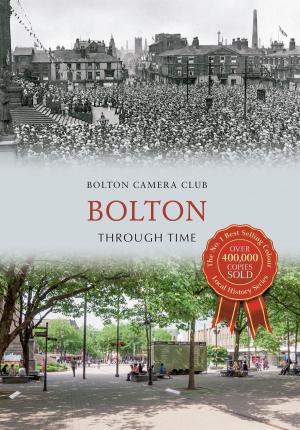Victorian & Edwardian Suffolk
Nonfiction, Art & Architecture, Photography, Pictorials, Travel, History, Modern, 19th Century| Author: | Humphrey Phelps | ISBN: | 9781445626147 |
| Publisher: | Amberley Publishing | Publication: | November 15, 2008 |
| Imprint: | Amberley Publishing | Language: | English |
| Author: | Humphrey Phelps |
| ISBN: | 9781445626147 |
| Publisher: | Amberley Publishing |
| Publication: | November 15, 2008 |
| Imprint: | Amberley Publishing |
| Language: | English |
Suffolk is still very much a rural county, but in Victorian & Edwardian times almost the whole population lived and worked on the land. Many of those living in the coastal villages and towns worked as fishermen or in related industries. This book captures in words and superbly reproduced sepia photographs what these people looked like and what they did. On the farms we see the famous Suffolk horses, bred to provide the power for the machinery and to haul the loads, and also the Suffolk sheep that were a famous breed. The beauty of the landscape was enhanced, not only by the wealth of timber-framed houses for which Suffolk is still famous, but also by scores of windmills, surely the most picturesque item of industrial architecture. We see people at work, at home and at play in the larger towns, such as Ipswich and Bury St Edmunds, and in scores of small villages. The book contains over one hundred and fifty photographs matched to contemporary descriptions taken from diaries, letters, biographical accounts and newspapers. The combination of word and photograph bring vividly to life glimpses of a period in Suffolk's history that is only just beyond living memory.
Suffolk is still very much a rural county, but in Victorian & Edwardian times almost the whole population lived and worked on the land. Many of those living in the coastal villages and towns worked as fishermen or in related industries. This book captures in words and superbly reproduced sepia photographs what these people looked like and what they did. On the farms we see the famous Suffolk horses, bred to provide the power for the machinery and to haul the loads, and also the Suffolk sheep that were a famous breed. The beauty of the landscape was enhanced, not only by the wealth of timber-framed houses for which Suffolk is still famous, but also by scores of windmills, surely the most picturesque item of industrial architecture. We see people at work, at home and at play in the larger towns, such as Ipswich and Bury St Edmunds, and in scores of small villages. The book contains over one hundred and fifty photographs matched to contemporary descriptions taken from diaries, letters, biographical accounts and newspapers. The combination of word and photograph bring vividly to life glimpses of a period in Suffolk's history that is only just beyond living memory.















